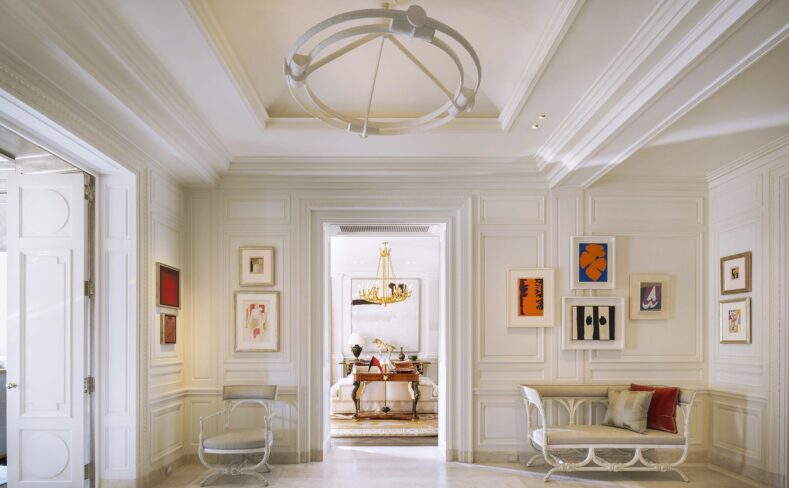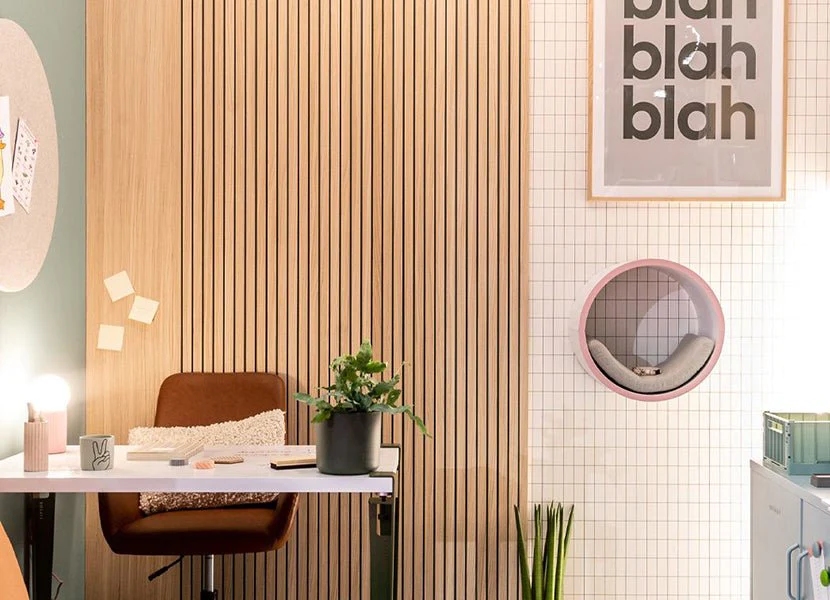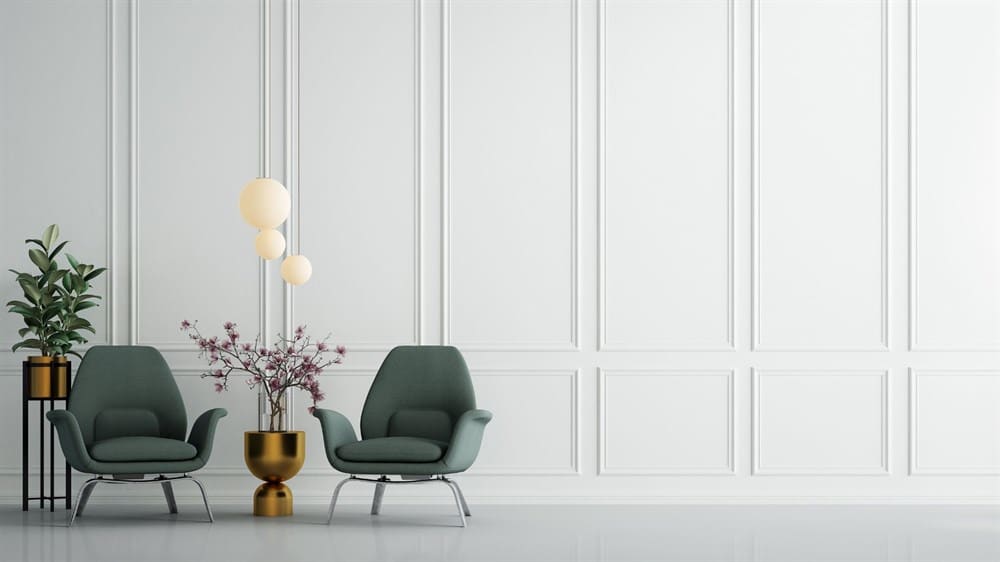
What Are the Popular Wall Panel Types in 2024?
In interior design and decoration, wall panels are an element that cannot be ignored, not only adding beauty to the space, but also providing the function of protecting the wall and creating a unique atmosphere. There are many types of wall panels, covering a variety of materials, designs and styles, from traditional tongue and groove wall panels to modern 3D wall panels, each showing the charm of decoration in its own unique way.
In this article, we’ll take an in-depth look at the different types of wall panels, revealing their characteristics, uses, and role in interior design. Whether you’re more interested in traditional classics or modern chic, understanding wall panel types will open up new horizons for you in creating your ideal space. As we explore each of these eye-catching wall panel varieties, maybe you’ll find the one that best suits your tastes and needs.
Related Articles
New Wall Panel Ideas and Breakthroughs for 2024
2024 Wall Panel Design Frontier Exploration
Explore 2024 Wall Panel Decorating Trends
Wall Panel Design Trends in 2024
I. Shaker style/slatted wall panels
One of the latest additions to the wood paneling trend is wood paneling walls. This originated as acoustic panels, which help the sound travel around a room, but it looks fantastic and is also used in decorative interior designs! Wood slats are plywood, usually ½ inch thick, or ¾ inch if you want a bold style. These look particularly good when left in natural but treated wood stain with an impactful statement colour.
Slatted wall paneling is an interior design solution that enhances the visual appeal and acoustic performance of interior spaces. By applying interior lath panels to your walls, you gain warmth and texture along with beauty and durability. This slat style is sometimes called acoustic paneling due to its sound-enhancing properties, and is the preferred choice for home environments ranging from offices to living rooms.
Low maintenance, lightweight and easy to install, slat wall panels provide an immediate interior makeover. They are made from wood veneer MDF that mimics a realistic wood grain surface, providing an authentic look with a contemporary style.
Available in a choice of four natural colours, these interior panels can be installed horizontally and vertically, as feature walls or around other architectural features such as chimney breasts and wall-mounted TV cabinets. These large panels can be easily nailed, screwed or adhered to any interior wall while covering a large surface area.
Slatted wall panel is a common wall decoration material that brings texture and layering to a wall by installing horizontal or vertical strips of wood or MDF (medium density fiberboard). Here is some basic information about batten wall panel:
1. Materials
Slatted wall panels are usually made from solid wood, MDF, PVC and other materials. Solid wood slat wall panels offer the natural wood grain, while MDF or PVC have the advantage of a smoother surface that is easier to paint and clean.
2. Design and style
Slatted wall panel can be designed in a variety of styles, with the option of horizontal strips installed horizontally or vertical strips installed lengthwise, or they can be mixed to create unique patterns and effects. The width and spacing of the slats can also be adjusted according to design needs.
3. Decorative effect
Installing slatted wall panels can add a decorative effect to your walls, making them look more structured. This decorating style can be either traditional or modern, depending on the style and materials chosen.
4. Color and painting
Slatted wall panels can often be painted in a variety of colors to suit different interior design styles. By choosing the right color, you can make your slat wall panels harmonize with the entire space.
5. Installation method
Installing slatted wall panel is relatively simple and usually involves fastening directly to the wall. Before installation, you need to ensure that the wall surface is flat. You can choose to use glue, nails or screws to fix it.
6. Applicable scenarios
Slatted wall panels are suitable for a variety of indoor environments, including living rooms, bedrooms, dining rooms, hallways, and more. It can not only be used on the entire wall, but can also be used as a decoration for specific areas such as background walls and bedside backgrounds.
7. Improve the texture of the wall
By installing slat wall panels, you can add texture to a flat wall so it doesn’t look drab. This sense of dimension and texture can improve the overall interior design effect.
8. DIY possibilities
Some slat wall panel designs are DIY, allowing individuals to design and install them to their own preference and creativity.
Tips
Any holes or existing imperfections in the wall should be filled before installation to achieve a smooth, level surface. This is to allow the adhesive to adhere properly if you choose this installation method.

II. Boards and battens
The application of placing narrow strips of wood (slats) over the joints of wider strips of wood (slats) is known as “board and batten” paneling, and its pronounced contours create attractive shadow gaps on the exterior or exterior Effect.
Because slat cladding is low cost and relatively easy to assemble, historically it was often applied to the exterior of barns to add strength and insulation, and to this day is sometimes referred to as “barn wall pane.”
Today, its traditional charm brings a brilliant interior design element to country homes and can add warmth, while bringing a modern, rustic look to living rooms and home offices across the country.
“Board and batten” wall panel often refers to a hybrid design that combines large flat panels with strip construction to create a unique wall effect. This design method is often used for wall decoration, bringing layering and visual appeal to the space.
Here are some features and design elements about board and batten wall panel:
1. The whole flat panel (board)
Use a whole flat panel as the basis of the wall, which can be solid wood, MDF board, etc. These large flat panels are often used for the bulk of walls.
2. Strip elements (slats) arranged horizontally or vertically
Add horizontal or vertical strip elements, such as wooden slats or MDF slats, to the main panel to create patterned and decorative effects.
3. Design diversity
“Board and batten” wall panel designs can be very diverse. Strip elements can appear in different forms and arrangements, such as vertical, horizontal, cross, etc., forming unique geometric patterns.
4. Matching of colors and materials
A rich mix of colors and materials can be achieved by choosing boards and battens in different colors, or using different materials, such as solid wood, MDF, PVC, etc.
5. Space definition and key areas
This design approach can be used to define a space, such as using “board and batten” wall panels as a backdrop, or to highlight a specific area, such as a TV wall or bedside backdrop.
6. Combination of modern and traditional
“Board and batten” wall panels can display a modern simplicity or incorporate traditional elements, depending on the materials, colors and arrangement chosen.
7. Decorate and protect walls
This design method not only has a decorative effect, but can also be used to protect the wall. For example, in a home or commercial space, slatted wall panel can cover some sections of wall that may be damaged.
“Board and batten” wall panel designs inject unique character and artistry into walls and can be customized to suit different design concepts and style needs. This method of wall paneling is becoming increasingly popular in modern interior design.
III. MDF slat wall panels
This type of lath consists of 10 – 12 cm wide slats placed side by side on the wall, they are usually placed at the height of the dado rails, but they can also be installed from floor to ceiling. If you want to try something different, you can also place the panel strips horizontally on the wall. This style of wall paneling is classic, it is often found in hallways, bathrooms and kitchens. However, it’s not limited to these applications and can be placed anywhere in your home, except on the ceiling, because that looks a little weird.
MDF (medium density fiberboard) strip wall panel is a decorative wall covering material commonly used in interior design and decoration. Here is some basic information about MDF slat wall panels:
1. Material composition
MDF is a board with uniform density formed by high temperature and pressure treatment of wood fiber and resin. MDF batten wall panels are typically made from MDF boards and feature a batten or strip design.
2. Appearance and design
MDF slat wall panels come in a variety of looks and designs and can have horizontal or vertical strip patterns, or they can be checkered, rectangular or other geometric shapes. This design brings texture and layering to the wall.
3. Installation method
Installing MDF batten wall panels usually involves fastening the strips directly to the wall. Installation can be recessed or covered with existing walls, depending on design and personal preference.
4. Painting
MDF slat wall panels often require painting or other coatings after installation. This changes the color, improves surface texture, and provides better protection for the wall.
5. Applicable scenarios
MDF slatted wall panels are widely used in living rooms, bedrooms, dining rooms, hallways and other interior spaces. They are an affordable decorating option that can quickly enhance the look of a space.
6. Advantages
MDF slat wall panels are relatively lightweight, easy to install, and relatively smooth. Because MDF is a man-made material, its surface is generally more uniform than solid wood, providing a consistent appearance.
7. Things to consider
Before installing MDF slat wall panels, make sure the wall surface is flat and dry, consider the impact of the surrounding environment on MDF, and avoid factors such as moisture and high temperature.
Overall, MDF slat wall panels are a popular interior decorating choice that works well with a variety of design styles. Before selecting and installing, it is recommended to have a detailed understanding of the material’s properties and installation methods to ensure that the final effect is as expected.

IV. Shaker wall panels
Shaker style wall panel is a wall panel decoration inspired by Shaker design concept, which is simple, practical and clear. The Shaker design style originated in the United States in the 18th century and was created by the cabinet makers and craftsmen of the Shaker community. This design style emphasizes simplicity, practicality, and functionality, often characterized by straight lines and smooth panels.
Shaker style is one of the most popular styles, where strips are used to form a rectangular shape and then spaced evenly apart. In our opinion, Shaker wall panel has a more palatial aesthetic, a style found on most country estates, Chelsea homes and high-end establishments.
You’ll often see cabinets with shaker-style panels on the front. Shaker MDF wall paneling is a versatile style that can look elegant or quirky depending on the shades used.
Here are some key features about shaker wall panels:
1. Smooth panel
Shaker wall panels are typically constructed of smooth, uncarved panels. This emphasizes a simple, clean look, consistent with the Shaker design philosophy.
2. Straight lines and simple design
Shaker design emphasizes straight lines and simplicity, and wall panels usually have clear straight lines without excessive complex decoration.
3. Square design
Shaker wall panels often adopt a box-like design, dividing the wall into rectangular or square areas to form an orderly and even layout.
4. Neutral tones
Shaker designs usually use neutral tones such as white, beige, gray, etc. to enhance the overall freshness and brightness.
5. Wooden materials
Shaker wall panels are typically made from wood materials such as solid wood or MDF to reflect the simple beauty of natural materials.
6. Wide applicability
Shaker style wall panels are suitable for a variety of interior environments, including living rooms, bedrooms, kitchens, etc., bringing a classic and elegant atmosphere to the space.
7. Functional considerations
Shaker design focuses on practicality and functionality. The design of wall panels often takes into account the protection, cleanliness of the wall and the comfort of the overall space.
8. Simple but not monotonous
Shaker wall panels add a sense of tranquility and comfort to the space through a minimalist design without appearing monotonous.
Shaker wall panels are suitable for those looking for simplicity, functionality and a traditional style. This design style emphasizes functionality and clear lines, bringing an atmosphere of comfort and tranquility to interior spaces.
Conclusion
When choosing wall panel, we can make an informed decision based on personal preference, decorating style, and space needs. No matter which wall panel type you choose, maintenance and upkeep are key to maintaining its beauty and durability. Regular cleaning, moisture-proofing and waterproofing can extend the service life of the wall panels and maintain their original luster and texture.
Quick Quotation



